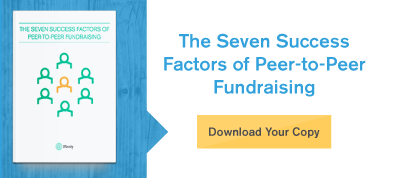The Biggest Opportunity In Nonprofit Data
Over the past few weeks I’ve been reflecting quite a bit on our experience at this year’s Do Good Data Conference in Chicago. Now in its third year, Do Good Data is the brainchild of Andrew Means, an analyst, entrepreneur, teacher, and friend of Plenty who is Associate Director of the Center for Data Science & Public Policy at the University of Chicago. Andrew saw a need in the space for a conference focused on the applications (and implications) of data on social impact – so he created it.
In only three years he has built Do Good Data into one of my favorite conferences. While there are plenty of places to go to learn about nonprofit systems and technology, the chances to learn, share, and think about nonprofit data applications are few and far between. This year’s DGD was the biggest yet, and sessions ranged from orientations on impact measurement for beginners, to more sophisticated workshops on everything from decision trees to multiple regression to spatial mapping. Yours truly presented a session on using network analysis to measure peer-to-peer relationships, a topic near and dear to my heart both because of our work at Plenty and because said topic is the basis for my upcoming master’s thesis.
That’s another difference between Do Good Data and other conferences in the space. At DGD you’re going to find people with formal schooling in data analysis, and there is quite an impressive range of PhDs, social scientists, data consultants, predictive analysts, and researchers in attendance. But this year I noticed an encouraging trend: this year’s conference was twice as big as last year’s, and most of the growth seemed to be from fundraisers, program managers, and executives actually working at nonprofits. It’s clear that more and more people are becoming interested in how to harness their data, and more importantly, more and more people are acquiring the skills to do it.
As more people familiarize themselves with data it becomes increasingly important for the nonprofit community to understand that there is a real difference between technology and data. Technology includes the software and hardware we use to power our work. Technology allows us to automate repetitive tasks, do things faster, and collect more information. Data, on the other hand, is what we get when we harness technology. Data is the information we wanted to find out when we installed the technology in the first place.
In my experience the sector has heavily invested in technology and under-invested in data analytics. We commonly find that our clients are swimming – no, drowning – in data, but spend most of their time wrestling with technology, and therefore have little time left over to make sense of everything they’ve captured.
Starting with analytics doesn’t have to be difficult. In fact, with free tools like Google Sheets, it doesn’t have to cost anything more than your time. Here are some basic fundraising, web, and financial explorations to get you started.
1. Take a list of your current donors – say, anyone who has given this year – and arrange them in order from highest to lowest in a spreadsheet.
-
What is the spread? Can you explain it?
-
What is the average donation? What is the median donation? Are they markedly different? In fundraising, we expect averages to get skewed by a few large donors. So we look at median giving as a way to get a handle on overall giving behavior.
-
Do the giving levels correspond to your donation page? Most of our clients are surprised by the extent to which their own donation page influences their incoming donations. Do you see patterns? What would happen if you increased the levels on the donation page?
2. Head on over to your Google Analytics account and look at your traffic for the last few months. Go to Behavior > Site Content > All Pages.
-
Where are the majority of your visitors going on your site? You will probably see that some pages do better than others. Which ones?
-
What is the bounce rate of your most trafficked pages? Are visitors heading deeper into your site, or leaving you altogether?
-
Head to Audience > Demographics > Overview. Take a look at the age and gender of your visitors. Does it reflect your idea of your core constituent? Does anything surprise you?
3. See if you can get a copy of your most recent financial statement – maybe the year-end annual report.
-
Where are the largest expenditures of your organization? Is there anything that surprises you? Disappoints you?
-
Compare the financials to your strategic plan. Are you spending money in the areas that you have outlined as a priority? This is important enough that I’m going to write a longer post later this year on this same topic – but often I find that an organization’s stated priorities are actually not the ones it is actually spending money to support. Where are the disconnects?
Better technology isn’t a goal in its own right. The purpose of technology is to help us generate insights. Your organization has likely spent lots of time and money on its technology. A bit of time analyzing the data will do wonders for you – and likely create new questions in your mind about how you can better achieve your nonprofit’s mission. Don’t be afraid to roll up your sleeves and play!
Share this
You May Also Like
These Related Stories

What's Hiding In Your Peer-to-Peer Data?



No Comments Yet
Let us know what you think